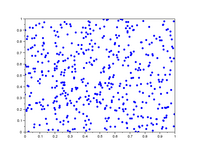Independent and identically distributed random variables

Imagine you have a jar filled with colorful candies. You want to know what color candies are in the jar, so you start picking them out one by one with your eyes closed. Each time you pick one, you write down the color.
Independent:
Now, let's imagine you have another jar, but this one is filled with different types of candy. You decide to do the same thing and pick out candies one by one with your eyes closed. However, to make sure your data is accurate, you decide to separate the candies based on their color once you have picked them out of the first jar. You do not want to accidentally pick the same color twice in a row, so you have to make sure the colors are not related to each other in any way. That is what we mean by each color candy being independent of the others.
Identically distributed:
Next, let's assume you have a friend who is doing the same thing with a similar jar of candy. If both of you picked candies from your own jar, there is a possibility that the number of candies of each color in your jar is different from that in your friend's jar. Hence, the frequencies of the colors would be different in both jars. However, if both of you are picking from the same jar (same type and number of candies), then the frequencies of the colors you pick would be similar, if not identical. That is what we mean by being identically distributed.
In summary, independent and identically distributed random variables refer to a situation where several random events are not related to each other in any way (independent) and have the same frequency or distribution pattern despite being separate events (identically distributed).
Independent:
Now, let's imagine you have another jar, but this one is filled with different types of candy. You decide to do the same thing and pick out candies one by one with your eyes closed. However, to make sure your data is accurate, you decide to separate the candies based on their color once you have picked them out of the first jar. You do not want to accidentally pick the same color twice in a row, so you have to make sure the colors are not related to each other in any way. That is what we mean by each color candy being independent of the others.
Identically distributed:
Next, let's assume you have a friend who is doing the same thing with a similar jar of candy. If both of you picked candies from your own jar, there is a possibility that the number of candies of each color in your jar is different from that in your friend's jar. Hence, the frequencies of the colors would be different in both jars. However, if both of you are picking from the same jar (same type and number of candies), then the frequencies of the colors you pick would be similar, if not identical. That is what we mean by being identically distributed.
In summary, independent and identically distributed random variables refer to a situation where several random events are not related to each other in any way (independent) and have the same frequency or distribution pattern despite being separate events (identically distributed).
Related topics others have asked about:
